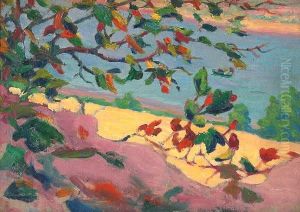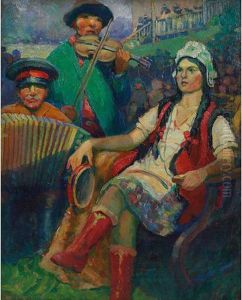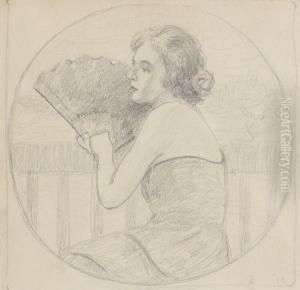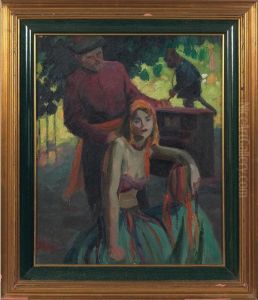Henry Charles Hannig Paintings
Henry Charles Hannig, an artist who navigated his career through the transformative years of the late 19th and early 20th centuries, made significant contributions to the arts during a period marked by rapid social and technological changes. Born in 1872, Hannig's early life was set against the backdrop of the Industrial Revolution's latter stages, a factor that influenced the themes and techniques prevalent in his work. Throughout his career, Hannig explored various mediums and styles, reflecting the diverse art movements that characterized the era, from Impressionism to the emerging Modernism.
Hannig's artistic journey began in earnest at a relatively young age, following traditional pathways of apprenticeship and academic study. His education in the arts was comprehensive, encompassing both the technical aspects of painting and sculpture, as well as the theoretical underpinnings of aesthetics and art history. This solid foundation allowed Hannig to experiment with confidence, blending classical techniques with more avant-garde approaches that were beginning to gain popularity among his contemporaries.
Throughout his career, Hannig exhibited a keen interest in the human condition, a theme that recurs in many of his works. Whether through the lens of portraiture or the broader strokes of genre scenes, he sought to capture the essence of his subjects with empathy and insight. His body of work is notable for its emotional depth and technical proficiency, qualities that earned him both critical and commercial success during his lifetime.
Despite his achievements, Henry Charles Hannig remained somewhat of an enigmatic figure in the art world, often eschewing the limelight in favor of a more introspective and solitary artistic practice. He was known to be a prolific artist, yet many of his works were only exhibited posthumously, contributing to a resurgence of interest in his contributions to early 20th-century art.
Hannig's legacy is one of innovation and resilience, embodying the spirit of an era that was defined by its break from tradition and its embrace of new possibilities in art and society. He passed away in 1948, leaving behind a diverse and compelling portfolio that continues to be studied and appreciated by art historians and enthusiasts alike. His work not only reflects the personal journey of an artist navigating the complexities of his time but also offers a window into the broader cultural and historical shifts of the late 19th and early 20th centuries.



